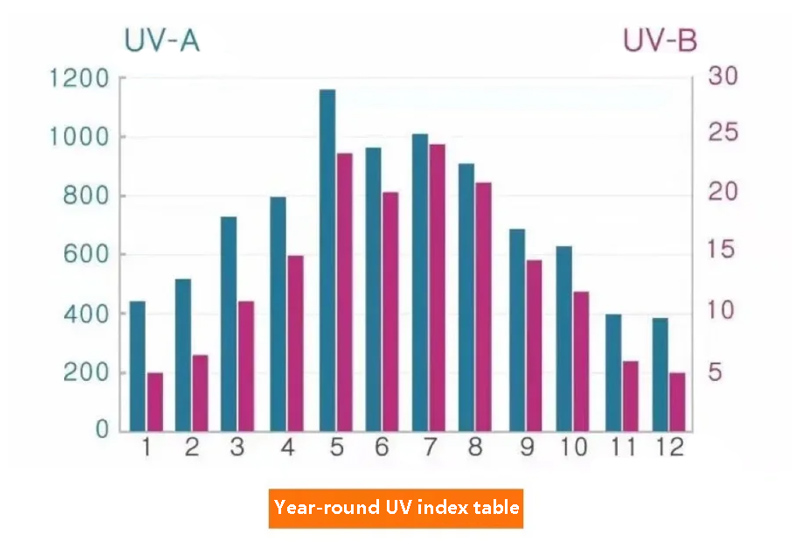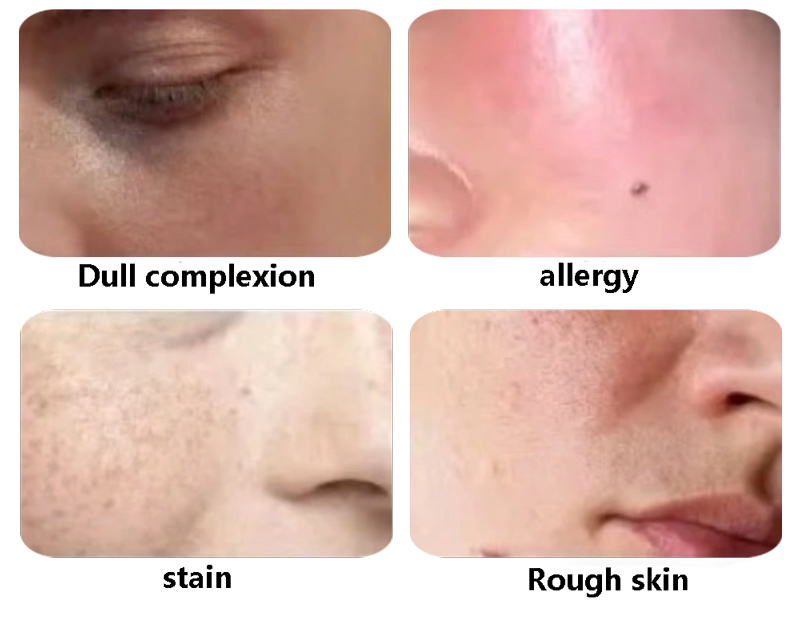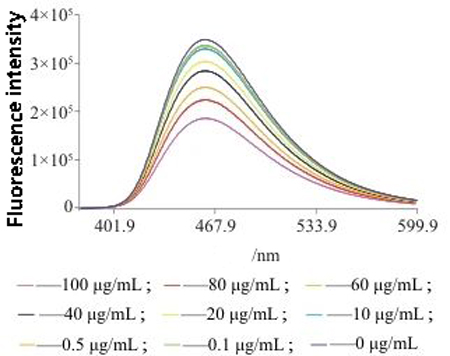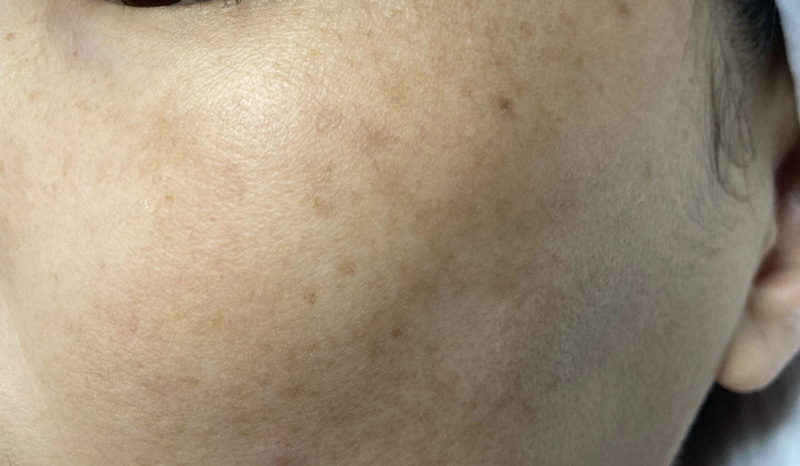It is said that spring is the golden period of whitening, but this sensitive and fragile skin state, a little careless will be worse!
Spring breeze brushed the face, everything recovered, ultraviolet light enhanced, melanocytes also became active, dark yellow, acne… All kinds of problems are maddening.
Should sensitive muscles miss the best time to whiten in spring?
No, spring whitening skills, choose the right way, but also stable and bright!
Spring whitening, challenges and opportunities for skin
Challenge 1: More skin in spring
In spring, the cold and warm air frequently alternates, the temperature difference between day and night is large, the wind is strong, the skin moisture loss is accelerated, and the skin is prone to water shortage.
It will not only be tight and dry, but also slow down the metabolism of the stratum corneum, resulting in the accumulation of waste keratins, rough and dull skin, and the barrier function will also be damaged, and the skin will be sensitive and fragile, with redness and tingling.
Ultraviolet rays, free radicals are infecting our skin at any time, and the damage quietly accumulates, waiting for the summer outbreak, the skin turns black.
Chance 1: Spring temperature is suitable
The temperature in spring is not as hot as in summer, the skin secretion is less, the speed of skin oxidation is slower, inflammation is reduced, and the metabolism of spring skin growth begins to accelerate, which is more conducive to whitening.
Opportunity 2: Ultraviolet light is weaker in spring than in summer and autumn
Compared with the intensity of ultraviolet light in summer, the ultraviolet light in spring is obviously much weaker.
Spring strengthen whitening spots, skin recovery will be faster.
Whether it is to prevent long spots, or to treat dark spots, spring is the most suitable season.

Opportunity 3: Remove spots sooner rather than later
Color spots and dullness are a process of gradual deepening.
The appearance of the facial stains and darkening is actually the final state of melanin transport and deposition to the epidermis, which generally takes several months to have a significant desalination effect, if not intensified in spring, the summer is affected by strong ultraviolet rays, which is more difficult to deal with.
Spring whitening, how to seek brightness in stability
Soothing Moisturizing Repair – A good whitening foundation
The spring climate is changeable, the skin barrier is fragile and vulnerable, and the hasty use of strong whitening ingredients may stimulate and sensitize.
If you want to be stable and whitening in spring, the first step is to play a healthy muscle base!
Gentle whitening – Gradually lighten skin tone
After the skin condition is stable, choose mild whitening ingredients to lighten it!
Like traditional whitening ingredients: 377, VC, etc., are more stimulating and need to be avoided.
Choose glutathione, a natural polypeptide, to lighten your skin.
Glutathione – mild blackening and brightening
Glutathione is a low molecular weight mercaptan tripeptide that plays an important role in maintaining intracellular REDOX balance.

In addition to its excellent antioxidant properties, the discovery of its anti-melanin-producing properties has also prompted it to become a whitening agent.
Glutathione can reduced glutathione (GSH) and oxidized (GSSG), of which the reduced form has stronger antioxidant capacity.
Glutathione whitening mechanism
(1) Directly inhibit the activity of tyrosinase
Tyrosinase directly inhibited by sulfhydryl chelating copper sites.
(2) Interference with tyrosinase transfer
Interferes with tyrosinase’s cellular transfer to the promelanosome, which is a prerequisite for melanin synthesis.
(3) The melanin synthesis pathway inclined to phaeomelanin
Glutathione shifts melanin production from eumelanin to fusomelanin synthesis (rather than melanin, which darkens the skin) through a reaction between sulfhydryl and dopa quinone.
Studies have shown that glutathione also has a good anti-allergic physiological effect. (Is not the best partner of spring fragile muscle whitening)
Glutathione related research data
Inhibiting tyrosinase activity
The experimental data showed that 1mg/ml reduced glutathione inhibited tyrosinase activity by 92.5%.
Scavenging free radicals
The activity and efficacy of reduced glutathione (GSH) in scavenging DPPH free radical, HO· free radical and superoxide anion free radical in vitro are obvious.
Soothe and condition skin
SirjeKaur et al. examined changes in iron levels and various forms of GSH in the skin of patients with allergic contact dermatitis and found that oxidized GSH (i.e., GSSG) elevated, suggesting that GSH may reduced due to scavenging free radicals produced in allergies.
Zhao Xinling et al. tested the anti-allergic activity of GSH in vitro and found that GSH can fight allergies.
Its effects include inhibition of hyaluronidase and inhibition of delayed allergic reactions, and the effect can be comparable to that of pramine at a concentration of 5mg/ml.
application of glutathione
Although reduced glutathione has an outstanding whitening and soothing effect, its aqueous solution is extremely unstable, and it can only stored for about 2 hours when exposed to air at room temperature, so we rarely see it on the market.
Yubaifu glutathione solution
Breaking the limitations of the use of reduced glutathione
The stable reduced glutathione solution prepared by using the unique stabilization technology and double vacuum locking technology.
Skin feeling moist non-sticky, avoid light can stored for a long time, without losing life.
Suitable for all kinds of skin, including sensitive skin moisturizing and brightening use. For spring has whitening needs, and do not want to hurt the skin of the treasure can try oh!
References:
- [1] Wang Jianxin. Introduction of natural ingredients of cosmetics (XI) [J]. Chemicals for Daily Use, 2019,42(06):50-54. (in Chinese)
- [2] Wang Ting, Zheng Yunyun, ZhA Jiansheng, et al. Comparative study on the application of reduced and oxidized glutathione in cosmetics [J]. China Cosmetics,2021(09):92-97. (in Chinese)
- [3] Kaur S, Eisen M, Zilmer M, et al. Patients with Allergic and Irritant Contact Dermatitis are Characterized by Striking Change of Iron and Oxidized Glutathione Status in Nonlesional Area of the Skin [J]. Journal of Investigative Dermatology, 2001,116(6):886-890.
- [4] ZHAO Xing-Ling, NIU Zhen-Zhen, Gong Yan-Ling, et al. The antiallergic activity of glutathione [J]. Journal of Qingdao University of Science and Technology (Natural Science Edition), 2019,40(03):23-28.
- [5] Cold Skin care: Glutathione, an ingredient that formulators both love and hate




